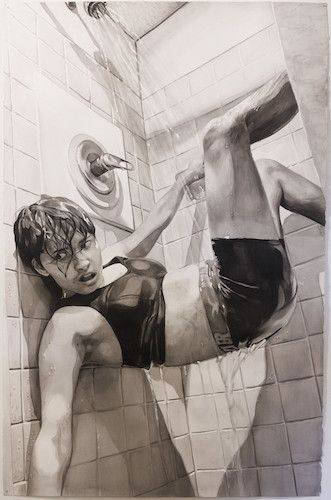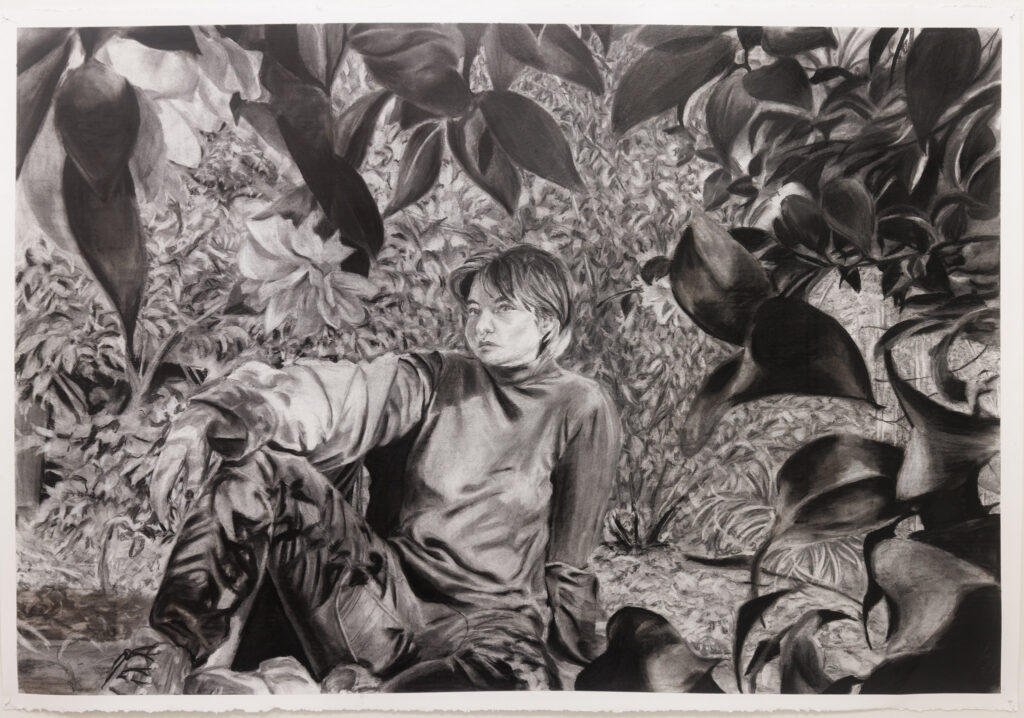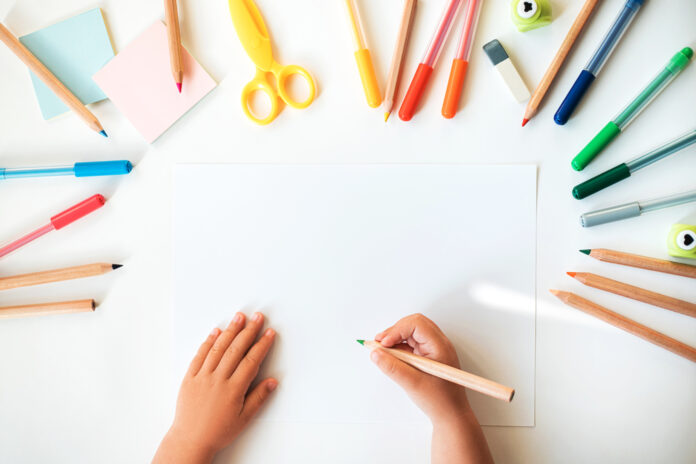A Pride-centric art exhibition was installed at the Pennsylvania Governor’s Residence in early June, featuring the work of students at Moore College of Art & Design in Philadelphia. The exhibit celebrates the community at Moore and “its commitment to providing a welcoming, engaging and empowering environment for its students, faculty, staff, alumni and the public,” according to a press release. Gov. Josh Shapiro and First Lady Lori Shapiro partnered with Moore to curate this Pride exhibit. The collection of paintings, drawings and prints will stay up through the end of August.
“Since the College’s inception in 1848 as the Philadelphia School of Design for Women, founded to empower women to achieve financial independence, Moore has remained a welcoming learning environment for underserved and underrepresented populations in the art and design fields,” Cathy Young, president of Moore, said in an email. “We lean into, not away from, conversations on topics like identity and representation, all of which are important to our community and which deepen our longstanding core values of inclusion and access.”
Kaylee Corbi, a queer student at Moore, submitted the self-portrait “I Wasn’t Built for Communal Showers,” an ink drawing on watercolor paper. In it, Corbi captured themself suspended against the walls of a shower stall underneath the running tap.

“My inspiration was really about the joy that you can find inside of a challenge,” Corbi said. “When I’m pushed outside of my comfort zone, I always feel like the best version of myself.”
Corbi’s piece does not overtly comment on their queer identity, but they still believe it holds meaning in terms of queer artistic expression.
“[The narrative] is about me, and I happen to also be queer, and I think that’s just as valuable as one that’s about being queer because it shows that people who are in the LGBT community can still be represented and can be related to by people who aren’t,” Corbi said. “That’s very valuable; when we have these universal situations, it makes it harder for people to see us as others.”
Young, Moore’s president, underscored the idea that “there is an innate relationship between identity and art-making. The kind of work our students produce during their time at Moore comes from a place of self-awareness, self-expression, and honesty.”
Magdalene Sanchez, another Moore student whose artwork is in the exhibit, identifies as a genderfluid lesbian. In their drawing “Homesick,” also a self-portrait, they depicted themself surrounded by lush flora, reminiscent of the nature found in their home state of New Mexico.
“The way I show my queer identity in my art is fairly new,” Sanchez said. “When I made that piece, I wasn’t thinking about presenting myself as a queer person through my art yet.”
Yet having art displayed publicly as an openly queer artist is important to Sanchez, they said.
“I think it is a pretty great honor to be in this show and be a queer person and an artist in this time because even 20 years ago, I wouldn’t be a ‘queer’ artist, I wouldn’t be able to show that identity as openly as I am now,” Sanchez said. “It wouldn’t be a Pride exhibition, it would just be a women’s exhibition if it was still connected to Moore. It’s nice to be able to have that identity and have it out in the open and have it honored.”

In a political climate where self-proclaimed parental rights groups like Moms for Liberty are trying to censor LGBTQ+ culture in schools, and conservative lawmakers are trying to enforce laws that restrict queer and trans rights, the amplification of LGBTQ+ voices, regardless of medium, matters. According to the Human Rights Campaign, more than 500 anti-LGBTQ+ bills have been introduced in U.S. state legislatures, and more than 220 of those bills target trans and nonbinary people.
“In a world where we’re not guaranteed a space to speak, setting something that’s specifically dedicated to this subject guarantees that we at least have part of the visibility that everyone deserves,” Corbi said.
Sanchez pointed out that historically, visual art created by men has prevailed over art by women and queer people.
“These shows are important to queer artists so that we have our own space and we’re interacting with each other as well as the community,” Sanchez said.

